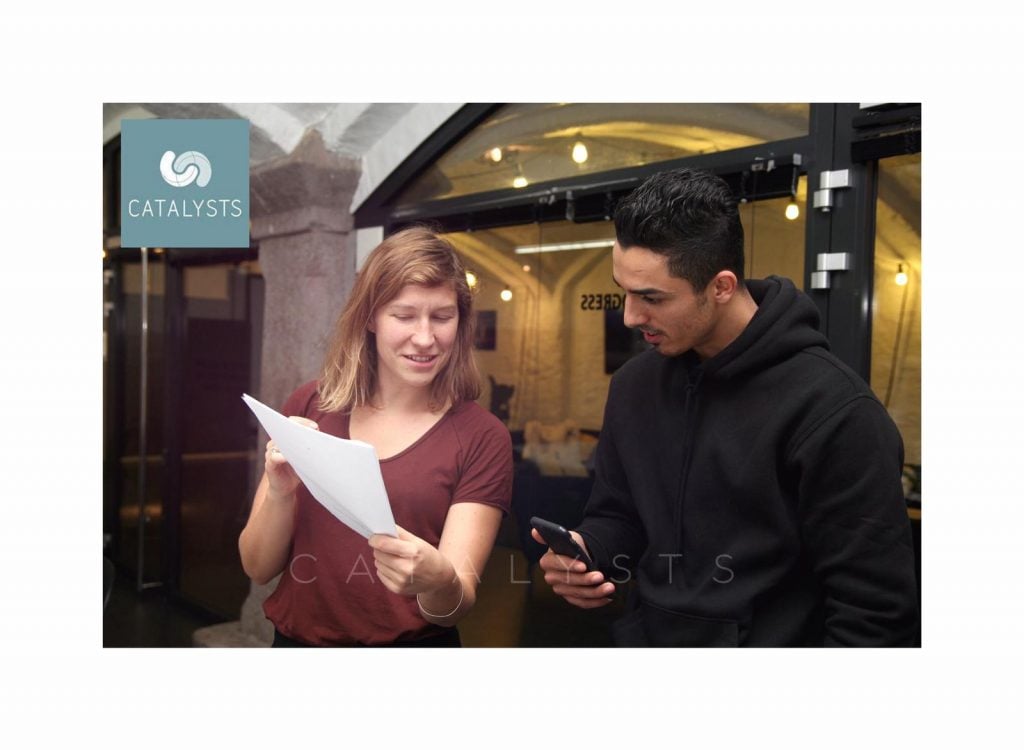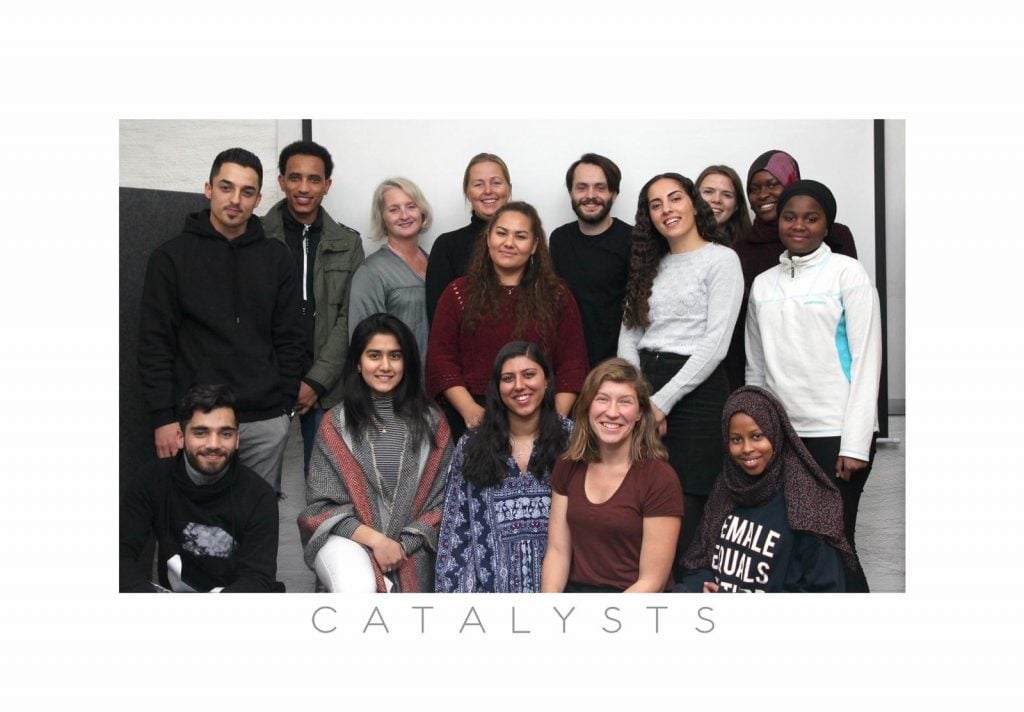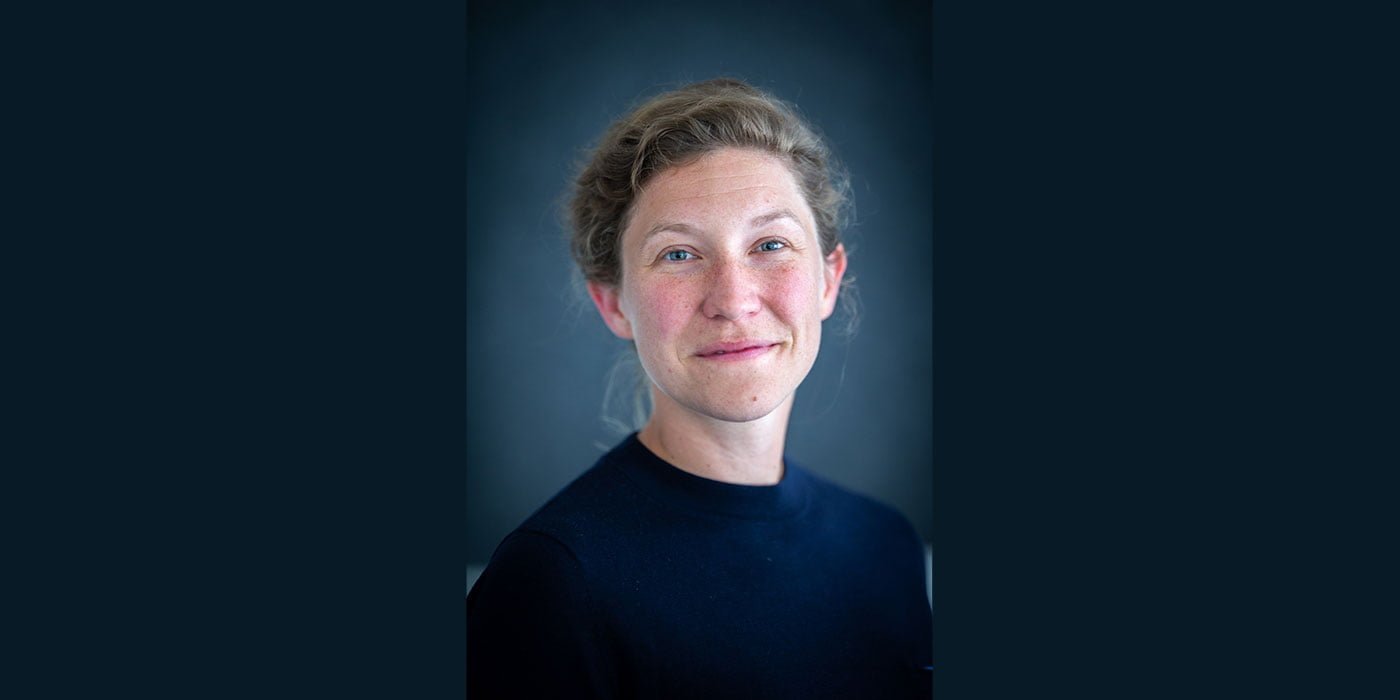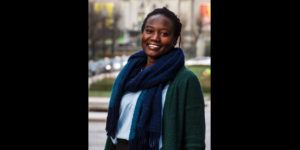Sarah Przedpelska (phonetically: pshed-pao-ska) is the Program Director at Catalysts Norway, an organization that facilitates a 6-month mentorship program for newly arrived immigrant youths in Norway. By pairing these youths with a mentor, Catalysts works to address school dropout rates, societal exclusion, and integration, whilst helping target youths find their place in society and map out their possible future paths.
As a multicultural child (with roots in Norway, Canada, and Poland), Sarah’s curiosity and zest for learning is childlike and apparent from the onset. Being Norwegian and having spent some of her formative years in Norway also informs her about the societal frameworks available to young people and youths. These days, she gets to carefully look in at how these frameworks differ depending on the person on the receiving end.
Sarah makes note of the discrimination young immigrant youths endure, a reality that is often exacerbated by skin colour, cultural or religious background. For some reason, and at a stark disadvantage to immigrants, Norwegians, and the economy at large, being an immigrant is often synonymous with lower skills and expectations with a large side-order of damaging unconscious bias. There is a prevalent and erroneous understanding of immigrants being ‘helped’ by their new countries. As opposed to embracing and fostering the mutually beneficial socio-economic benefits that comes from diversity and bridging perceived gaps, what is popular is a ‘let us show you our way because we believe it is better,’ mindset. This is basically translated to mean, ‘we have little regard for your way, because you are a charity case’. Consequently, for immigrant youths, their previous skills, language abilities, and life and experiences are rendered seemingly worthless. In particular, this lack of recognition of their identities (who they are and were before Norway) often sends a negative message of their value in society.
And this unspoken yet accepted status quo is not an immigrant or Norwegian problem. It is a societal problem.
This is why Catalysts’ work is so important, and Sarah’s role is vital to the conversation. Her innate quest for deep understanding and reflection on topics and projects in which she is engaged makes her a prime candidate to explore some of the realities of newly arrived immigrant youths in Norway. Her work allows her a front seat into what integration and inclusion processes look like for newly arrived immigrant youths in Norway, and how it might make or break their futures.
We have been fascinated and enamored by Sarah ever since we met her. We have spent many a time talking to, brainstorming with and soaking up knowledge from her on topics across the board. Her curiosity for life and learning is contagious. Her openness to newness is both untainted and uncompromising. There remains an excitement about her, one that is pure and settling. She is a bright and illuminating spark. When she is not working with youths, you may find her exploring new ideas in books and spending time with friends and family.
Read more from Sarah below.

“What specifically do you do and how has your work with youths at Catalysts informed or changed your views on diversity, inclusion and opportunity in any society (and in particular, Norway)?“
On the daily, I run mentor programs with recently arrived immigrant youth and volunteer adults in Oslo. The program runs for 6 months at a time, with the aim of strengthening self-esteem, self-efficacy and future choices for the youth, and improving multicultural understanding and mentoring skills for the volunteer adults.
My effort is to make the city more inclusive, one relationship at a time. The power of personal connections is what moves me – that’s where the magic happens. In addition to Oslo, I work with passionate people in the Catalysts team in Bergen, Østfold, Skien and soon Sandefjord. Those collaborative relationships are important too, and together the team impacts our entire ecosystem, from participants in our programs, to politicians, bureaucrats, researchers and other NGOs and businesses.
Getting to know the youth has allowed me to better understand what it takes to create belonging in Norway: it is hard! The youth are creative, and they try new things, including a mentor program where they meet a stranger to learn from them, and to share their own experiences and insight in return.
I have always been a proponent of diversity – who isn’t? It is hard to find someone who would openly proclaim that diversity is a bad thing, but not too many people have a clear idea of how to enact and encourage diversity wherever they are, and thereby cultivate benefits of it. Working with youth has given me a chance to understand diversity and inclusion as continuous processes, something I must work at every day, in my thoughts, interactions and actions. There is no ticky-box or seminar and then you’re good: It is constant, hard, beautiful and joyful work.
The opportunity to practice diversity and inclusion in Norway is evolving, and the premise is shifting. I think Norwegians used to think of themselves more traditionally bound and therefore static – any change would be a threat (I might be too young and ungenerous to think of old Norwegians any other way). But of course, that was never true; Norway has always been dynamic, changing, impacted by migration, trade and the opportunities those factors afforded. Save for capitalism, I don’t think it was a null sum game then, nor do I think diversity, inclusion and opportunity are premised by a null sum game now. Opportunity arises when forces collide when you encounter something that makes you shift your position. You just got to be willing to shift.
“Who are your target groups?”
The most general description of our target demographic is youth (15 – 25 years old ) who have recently arrived in Norway. Our programs are open for all youth who fit that description, though we do work with specific institutions to recruit participants, such as local high schools, universities, and local language programs. In each context, we encounter slightly different youth, and we therefore adapt the content of our meetings to fit their interests. Sometimes we partner with local businesses or institutions to run programs as a part of their recruitment strategy and inclusion work, and that is when we get a bit more specific.

“Why would you say there is a relatively higher dropout rate, exclusion and unemployment among immigrant and refugee youth in Norway?“
The reason for high school dropout is always complex, but there are some common denominators for recently arrived youth: Lack of recognition of the skills they have, both structurally by the school system and personally by the adults they meet day to day; expectations within Norwegian schools are different from other places in the world, both implicitly and explicitly. Many youths who arrive in Norway have already completed high school where they came from, others are far more advanced than the context they are placed in, but are placed predominantly due to how quickly they demonstrate language abilities. That causes major frustration and slows down ambitions for the future.
The identity category of age adds an almost permissible form of discrimination, one that we all too easily forget, once we are older. Young age compounded by brown or black skin, a different cultural background and being new in a town leads to a whole array of hurdles. Some of these hurdles manifest as straight out racism, other times as micro aggressions, sometimes as ignorance. The lack of recognition of strengths and skills is also due to the pressure teachers experience on their time, on marking, on administrative tasks and general burn out that prevents them from richly understanding the humans in their classrooms.
Youth fall off the traditional path of education (and employment) because they cannot bridge the gap between who they are and what they know, and what is expected of them. The way Norway seeks to place, train and include recently arrived youth in school and the workplace is based on a highly standardized and (in the short term) effective process. This process has a budget to maintain, target numbers to meet and educational outcomes to demonstrate. It is logical, but doesn’t have enough room for the exceptional circumstances so many youths arrive under. Going to school to learn Norwegian, socials, math and science is demanding for any teenager; throw in a history of migration, adapting to a new country and missing the normalcy of home, and it becomes hard to find meaning in and fulfil the effective process every day.
Many of the youth I work with are seldom seen for the strengths they possess at the outset, what they already bring to school each day. They are to a large degree measured on how well they attain new knowledge, often in a way that does not consider all the languages they know, how they’ve been practicing algebra, or how they used to build cars. When you are not recognized for your strengths, nor get to practice them, it impacts self-esteem and motivation. That’s why Catalysts emphasizes a strength finding approach – being able to center your strengths in a conversation with someone about the plan for your future, empowers you and improves self-efficacy.
“What happens to minority, immigrant and refugee youth after they drop out or when they cannot secure jobs?“

So many of the youth I work with have skilled experience; they are entrepreneurs, craftspeople, sellers, artists, facilitators; yet they are not recognized for that in the job market, either due to formal and rigorous requirements of an application process, or due to the hiring persons fear or inability to put in the labour to unleash the youths’ potential. It requires something extra to hire someone who didn’t come out of the same school or training as you did, and too often I think employers focus more on the effort that may cost them, than the gain they will receive from someone who can provide diversity in thinking and problem solving.
For example, a young man who lives in Ski has worked as an electrician for 6 years in his home country. He couldn’t get a job because he lacked formal credentials, so he went back to trade school. Now he has the educational credentials, but is lacking the mandatory training period to be gainfully employed.
School drop out or an inability to secure jobs impacts self-esteem, self-efficacy and hopes for the future. Several youths I work with express fears of fulfilling a stereotype, they find it more difficult to dream, and so they limit themselves, and the rest of us miss out on the futures that close before them, on what they could create.
“In lieu of the previous question, how exactly does Catalyst bridge the gap? Is your solution one-size fit all, or does it require a custom design of the program for each location?“
If the gap is wasted potential and ignorance, then strengthening social capital through meaningful relationships is the first step to bridge that gap.
Every mentoring relationship is unique, and as such, it requires an effort from Catalysts, the mentee, and the mentor, to create a relationship that speaks truth, is real and meaningful for those who are in it. With this uniqueness as a premise, we still standardize what we can. Part of standardization is to follow the evidence-based practices within mentoring, documented routines and actions that ensures safety, clear expectations and conditions for going through our 6-month program. I spend a lot of my time on checking in and following up on our participants. It takes time, it’s hard, but it is also the greatest pleasure of my work.
The biggest difference I believe Catalysts does to bridge the gap though, is enabling the youth and the volunteers to form a mutually learning relationship, with useful tools, clear goals and structure.
Our hope is that the two people who enter a mentoring relation will teach each other how to meet their goals through a better understanding of each other’s experience and hopes for the future. After the program is over, we hope that the youth will seek new, informal mentors, and that the volunteer adults will feel empowered to share their knowledge and social connections with others who they wouldn’t normally encounter in their networks.
“What type of emotional and mental effects does exclusion leave behind on youth? And does each gender relate or experience it differently? (Or is their reaction to their circumstances more of an individual process?“
Similar to the effects of school dropout, plenty of research shows that exclusion also impacts self-esteem and your hopes for the future. It’s hard to dream big when you are faced with daily experiences that makes you question your identity and worth. The youth I work with respond differently to exclusion. They are all resilient, keen observers of the subtle and sometimes not so subtle forms of exclusion they experience. So many different categories of identity seem to impact their responses to exclusion: More often than among young men, I observe the young women I work with parse their experiences with each other, and by doing this, they build their strength together. I don’t observe the young men I work with exchanging in the same way, but I may also just not be privy to these conversations.

“Why is the work you do with youths important? Why does mentorship and representation for youths matter?“
I have enormous faith in the ability of youth to impact and change the world around them for the better. I think that ability only manifests when you speak your truth, which is hard to do alone. I think we as a community and as individuals can always be better at shining at others, recognizing their truth, encouraging their ideas and independent thought, and in that way, build self-esteem. Shining at others refracts and shines back on us, and lets our own abilities grow. It’s exponential social physics.
A mentor is someone who practices this, but it’s not always easy to know how. I strive to make more people think of themselves as mentors and give them tools to practice mentorship towards youth in their life.
My work with youths forges uncommon social connections and improves understanding across social and cultural lives. Often, the mentors learn as much, if not more, than the mentees, and they take these learnings with them into their workplace and other parts of their communities, where others may also benefit from a wider perspective, more humility and a greater curiosity about others.
“What are the most effective ways to include these youths in society, beyond providing them with a mentor?“
The most effective ways to include youth in society is to create and share opportunities to let them show what they are capable of. Engaging youth in setting the terms for how they want to share their abilities is key. Meaningful engagement means letting go of some control, trusting that youth are capable and that they often know best what they need.

“What challenges (personal or structural) have you experienced in your work and where do you see opportunities to make greater impact?“
Personally, working with people can make you ripe for emotional burnout and social fatigue – I learned that the hard way. Now I am practicing how to set boundaries that are true to my needs to do my work right, and to be real with the people I work with. Figuring out the puzzle of how to make my work sustainable is really rewarding (and ongoing), because I don’t think work in the NGO sector must demand human sacrifices to be effective. Reading Adrienne Maree Brown’s Emergent Strategy and talking with other professional, highly effective women has been great for my reflections on work life balance. The better I am at that balance, the greater impact I think I can make.
“Do you come across unconscious bias in your work?”
All the time! I have accepted that I have “foot-in-mouth” disease, and that I at times pose ignorant questions, make assumptions or don’t notice how my privilege impacts the youth I work with in negative ways. I have amazing colleagues who call me out and in, the youth are pretty good at teaching me truth, and I labour to use my privilege to open doors for others and improve my understanding.
Unconscious bias is something we all possess, including our mentors and mentees! In training, I meet mentors who want to save youth and sometimes have quite rigorous ideas about how the youth they will meet can be their best self. That’s is a big part of why we have our training, to actively work with our awareness of unconscious bias, and to be better prepared to identify it in ourselves, and then change our actions. Participants in Catalysts program come to learn and do things they haven’t done before – which means that for the most part, these participants are open to having their minds changed, to adopting new ways of thinking and to learn from the people they meet. Mentees too, are not exempt from biases, so we work together to unpack it all as best we can.
“What do you know now about minority (immigrants/refugees) youths that you didn’t know before you started working at Catalysts?“
These youths are so full of hustle! They know what they are about, what they are interested in and what is important to them. A hustle they maintain despite setbacks. I didn’t know youth could be so resilient and patient in the face of challenges such as they encounter, but dang! they are graceful and wise (and sometimes drive me absolute bonkers!).

“How has this knowledge impacted your view of the world?“
Oh, I am hopeful and an optimist. Not just from will, but from seeing how brilliant, compassionate and wise the youth I encounter are. Many of them have experienced the world in ways they wouldn’t have chosen, yet they take that experience, learn from it and make it into their vision for the future, for what they value, and how they want to be in the world.
“If you could make a lasting difference in the Norwegian society to transform the experience of your target groups, what would you do?“
More resources into schools that will allow students more self-determination and ability to create the path to their future that fits their needs and dreams. This can be done formally in policy and informally in mindsets. Formally, it could entail more resources for teachers in pay and time, and a bigger emphasis on multicultural pedagogy, not just in the current teacher education, but on a frequent basis for everyone who teaches, regardless of who their students are. Informally, it means raising awareness that you, me and a lot more people can be mentors to youth; it is not rocket science to listen to a young person’s dreams, encourage them in reaching it, and sharing your experience and network to help them along the way.
Knowledge and creation are exponential – the more you share, the more it grows, and more people benefit from it. Not just the youth who have recently arrived, but everyone.





